| Stramonita haemastoma (Linnaeus, 1767) |
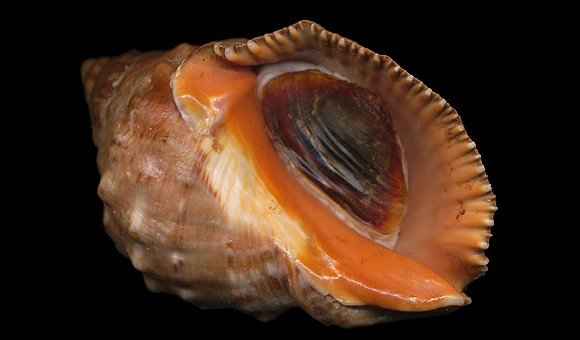 |
SW. France to Angola and offshore islands, Mediterranean. Predator on mussels and oysters in the upper rocky infralittoral, in areas exposed to waves, down to mostly 3m deep, sometimes deeper on muddy bottoms (20m, Italy).
Original taxon: Buccinum haemastoma.
Synonyms: consul, gigantea, oceanica…
On rocks, Ostriconi shore, Isola Rossa, NW. Corsica. 65mm. |
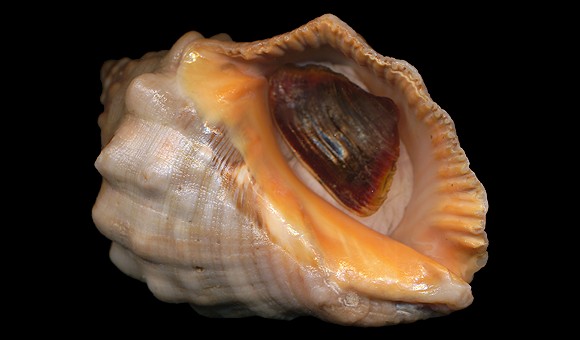 |
| Shallow water on rocks, St-Georges beach, Lumio, Calvi, W. Corsica. 65mm. |
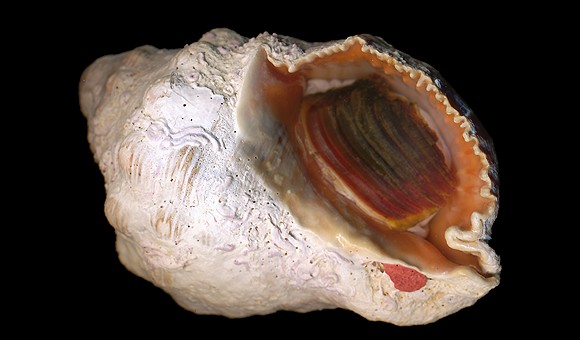 |
| Shallow water on rocks, Ghjunchitu bay, Isola Rossa. 65mm. |
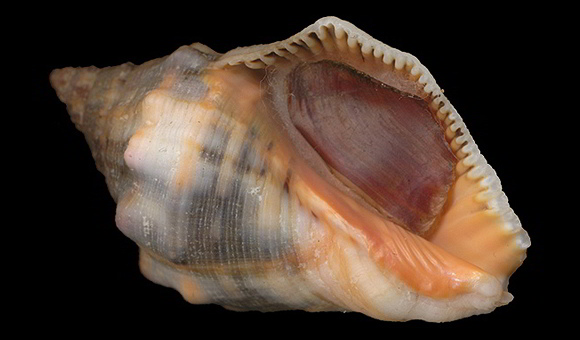 |
| 5m deep, on rock, Torre Delle Stelle, Cagliari, S. Sardinia. 45mm. |
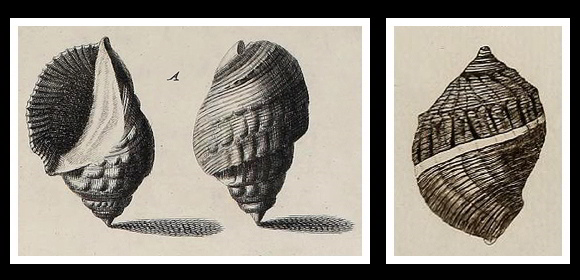 |
Linné: « Testa submuricata, labro intus striato, columella planiuscula, sauce fulva. » (Syst. nat. 1767, I, 2, p.1202).
Left: the species in Gualtieri’s Index testarum conchyliorum plate LI. « Buccinum maius, canaliculatum and sulcatum, crassum, striatum, primis striis maioribus, tuberosis, labio externo rugoso, colore cinereo depictum, intus croceum. » – Right: Purpura unifasciata in Lamarck, Histoire naturelle des vers vol. III, Paris 1827, plate 397. |
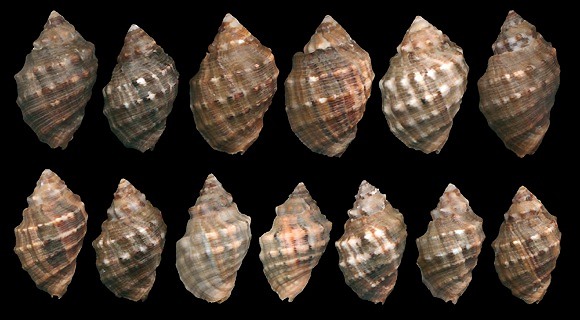 |
| All these specimens were found in the same place, 40m wide along the rocky shore, La Guardiola, Cala d’Alivu, Isola Rossa. 48-60mm. Shallow water, on top of three large boulders. |
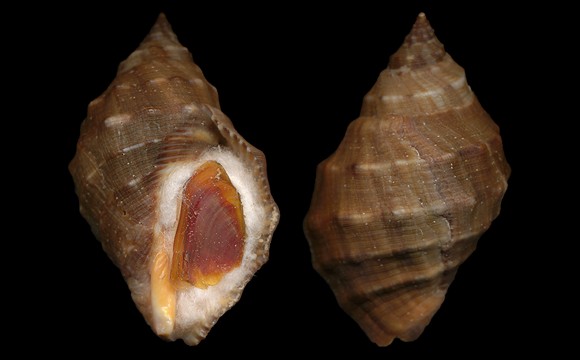 |
| A shell from Gozo island, Malta. 36,6mm. |
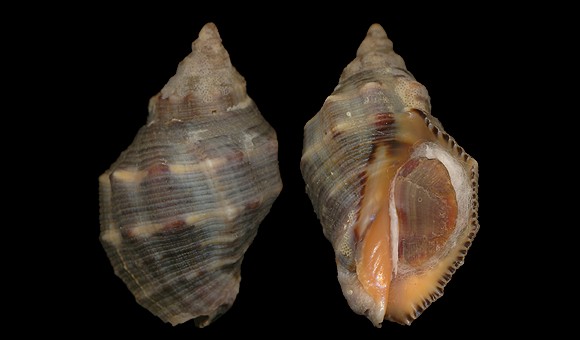 |
| Close to the specimen above, this one from the far south: 2-3m deep, on rocks, Mussulo bay, Luanda, Angola. 27mm. |
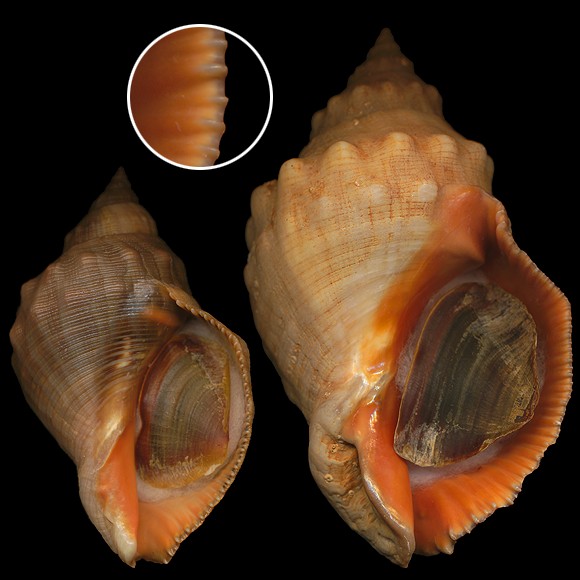 |
Back to Mediterranean: two large shells from Italy.
Left: 1-2m deep, on rocks, Numana, Ancona, Marche, 63mm.
Right: 10-15m deep, on mud and algae, P. Imperatore, Ischia island, Napoli, 90mm. |
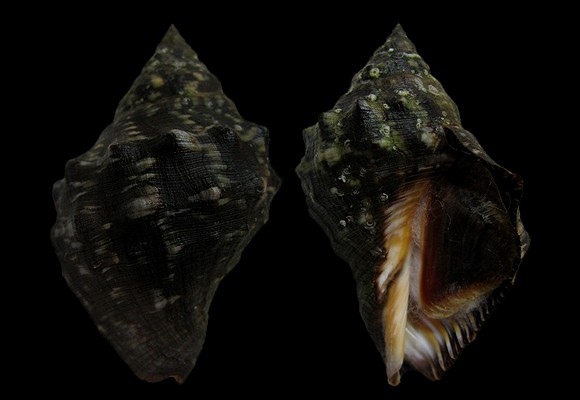 |
Dark one from Cagliari gulf. 41mm.
Original pictures provided by F. Daga – (CC BY-NC-SA). |
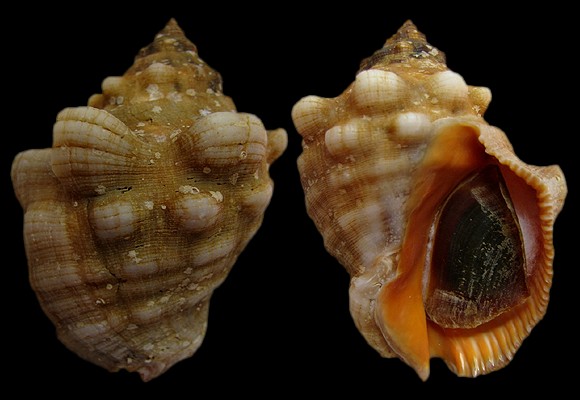 |
Above and below:
Two specimens from F. Daga’s collection, collected in Campania, at 10m deep – (CC BY-NC-SA). |
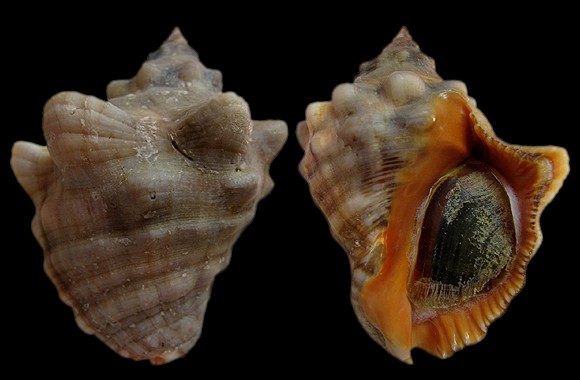 |
| This is the impressive form “consul” Gmelin. 71-75mm. |
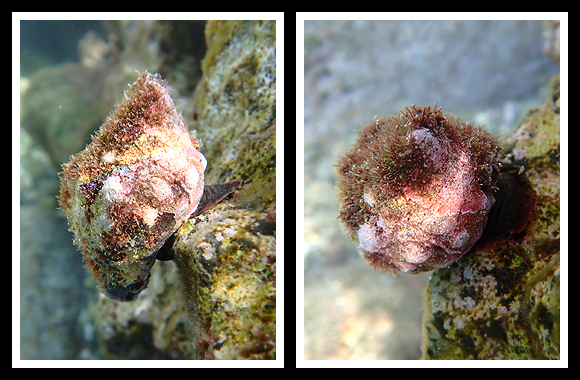 |
| Cleaning an overhang, eastern shore of Tiha Bay, Cavtat, Dubrovnik-Neretva Comitat, S. Croatia. |
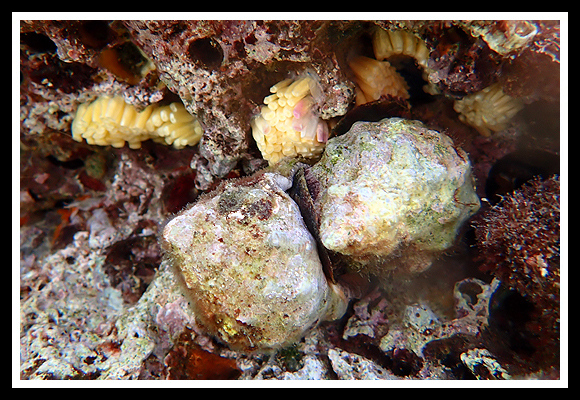 |
| Adults near the eggs, Ključice, southern shore of Tiha Bay. |
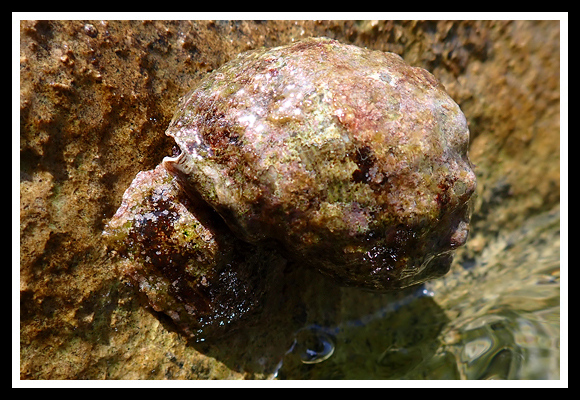 |
Same spot. Heavy and large adult above sea level.
Operculum expanded at left. |
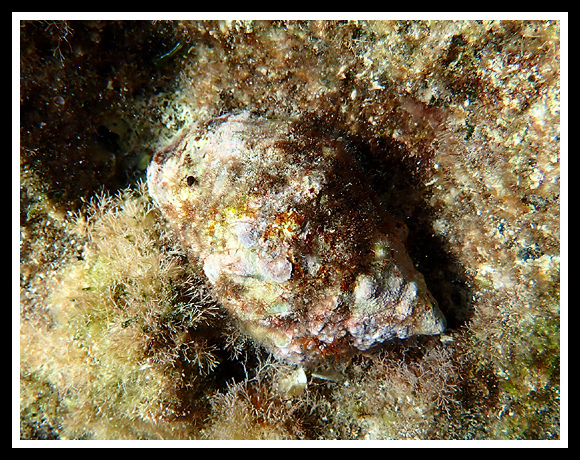 |
| On rock in shallow water, Šuperka Reef, between Rat Peninsula and Supetar Islet, Cavtat. |
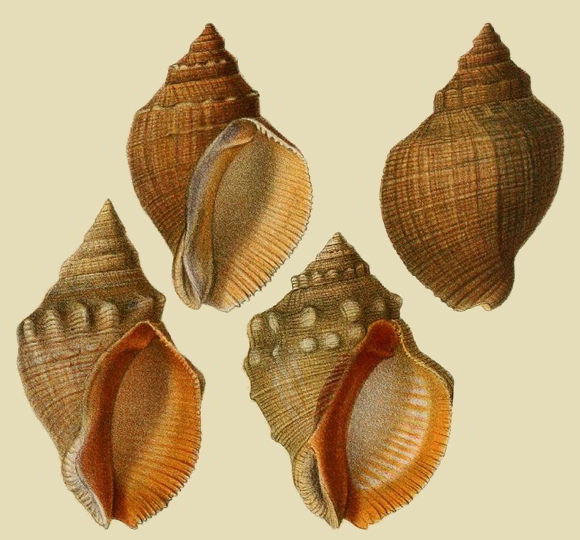 |
| The species in W. Kobelt: Iconographie der schalentragenden europäischen Meeresconchylien
vol I, Cassel 1887, plate VII. |
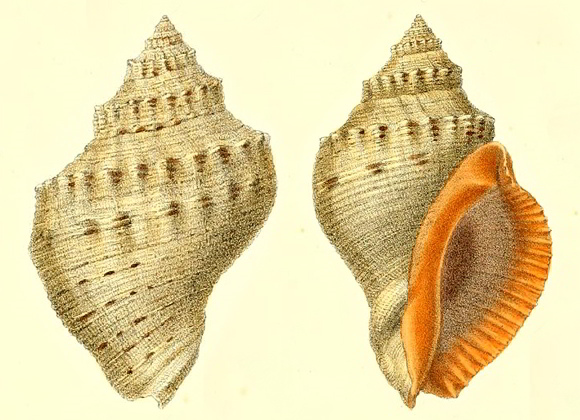 |
| The species in J. G. Hidalgo: Moluscos marinos de España, Portugal y las Baleares, Madrid 1870,
plate XXVII. |
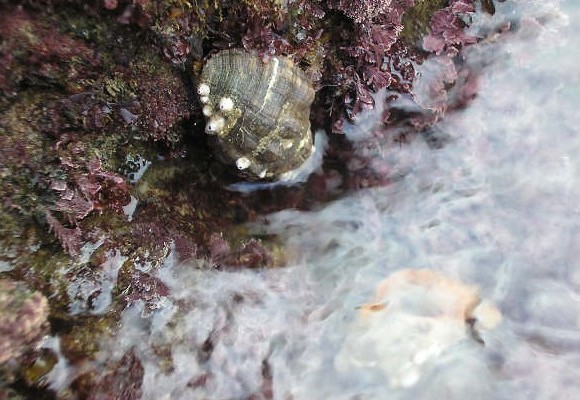 |
Live specimen on exposed rock at low tide, Cádiz province. Original picture provided by B.J. Muñoz Sanchez (ES).
– (CC BY-NC-SA) – |
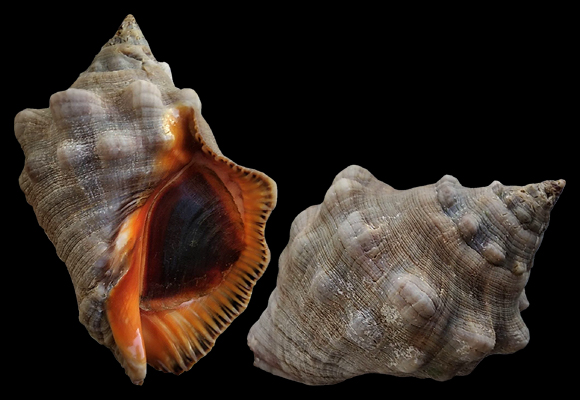 |
Same area.
Original picture provided by B.J. Muñoz Sanchez (ES).
– (CC BY-NC-SA) – |
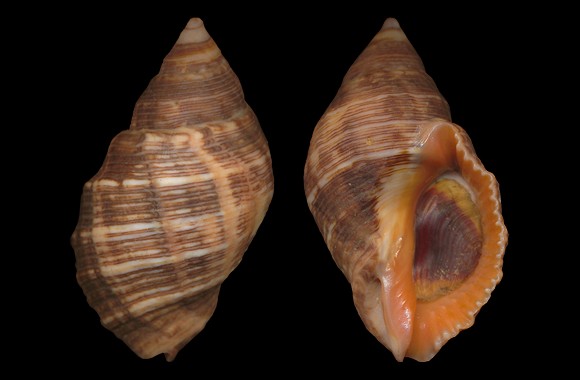 |
| A slender specimen from NW. Africa: 1m deep, on rock at low tide, Tarfaya, Tan Tan province, Laâyoune-Boujdour-Sakia El Hamra, SW. Morocco. 44,5mm. |
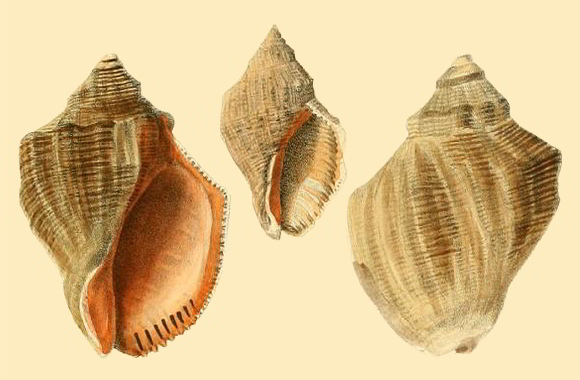 |
The species in W. Dunker: Index molluscorum, quae in itinere ad Guineam inferiorem collegit Georgius Tams, Cassel 1853, plate III fig.12-13.
« Occurrit frequens prope Loandam et St. Vincent. […] Non dubitamus quin haec omnia specimina and Buccinum haemastoma verum Linnaei pertineant, nam verba Linnaei bene in ea quadrant. Pari modo et “le Sakem” Adansonii Sénég. pag. 100. Tab. 7 fig. 1 huc referendus est. Auctore egregio teste, qui de hac cochlea ejusdem mollis et boni saporis ab incolis consumitur. » |
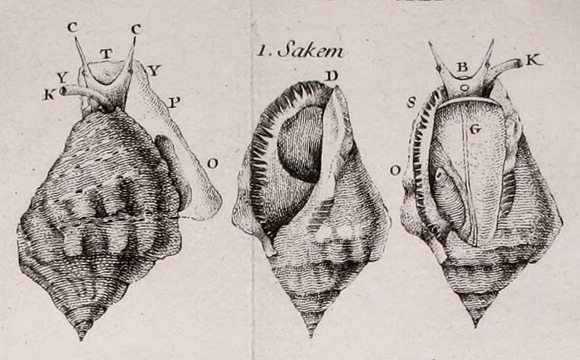 |
The “Sakem” in M. Adanson: Histoire naturelle du Sénégal, Paris 1757, plate VII.
« This shell is quite common on the rocks of Gorée island. The nearby niggers name it Sakem, by emphasizing the last syllable, as if they said Sakeum. They consume it cooked on the charcoal. The flesh is white and fairly tender. » |
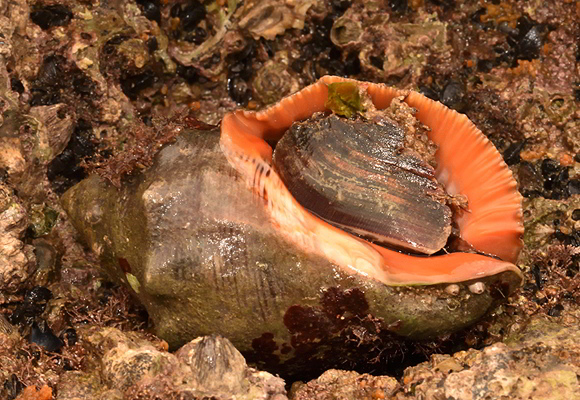 |
At low tide, Saint-Jean-de-Luz, Iparraide, SW. France.
Original picture provided by A. Bertrand (FR).
– (CC BY-NC-SA) – |
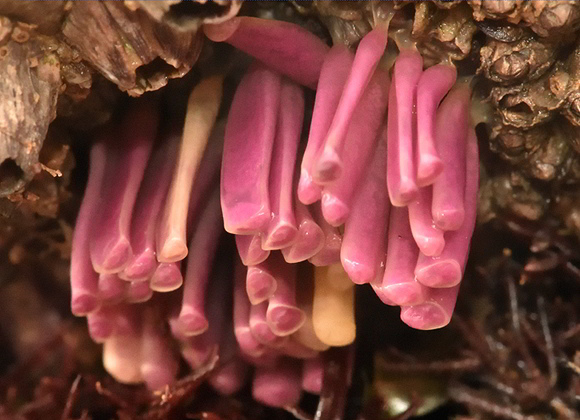 |
Same spot: egg cases.
Original picture provided by A. Bertrand (FR).
– (CC BY-NC-SA) – |
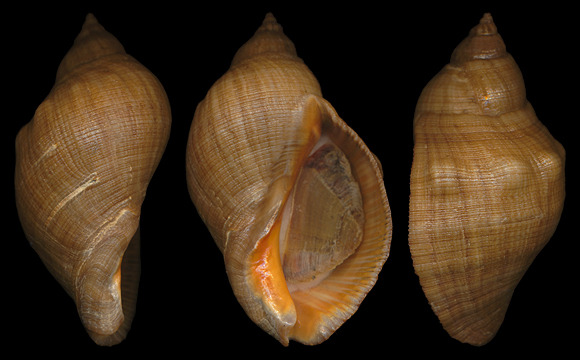 |
Above and below, NE. Atlantic population:
Smooth specimen collected at 5-6m deep, Hortense diving spot, Cap Ferret, Arcachon Basin, SW. France. 80mm. |
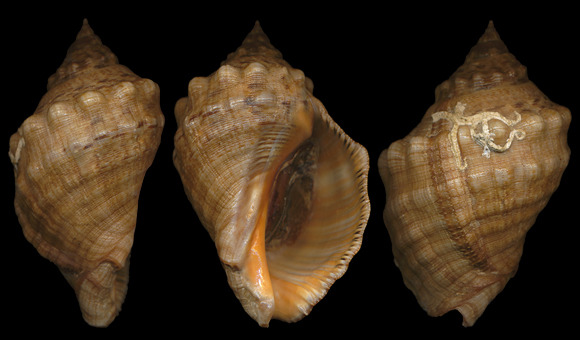 |
| Nodulose form. 72mm. |


























